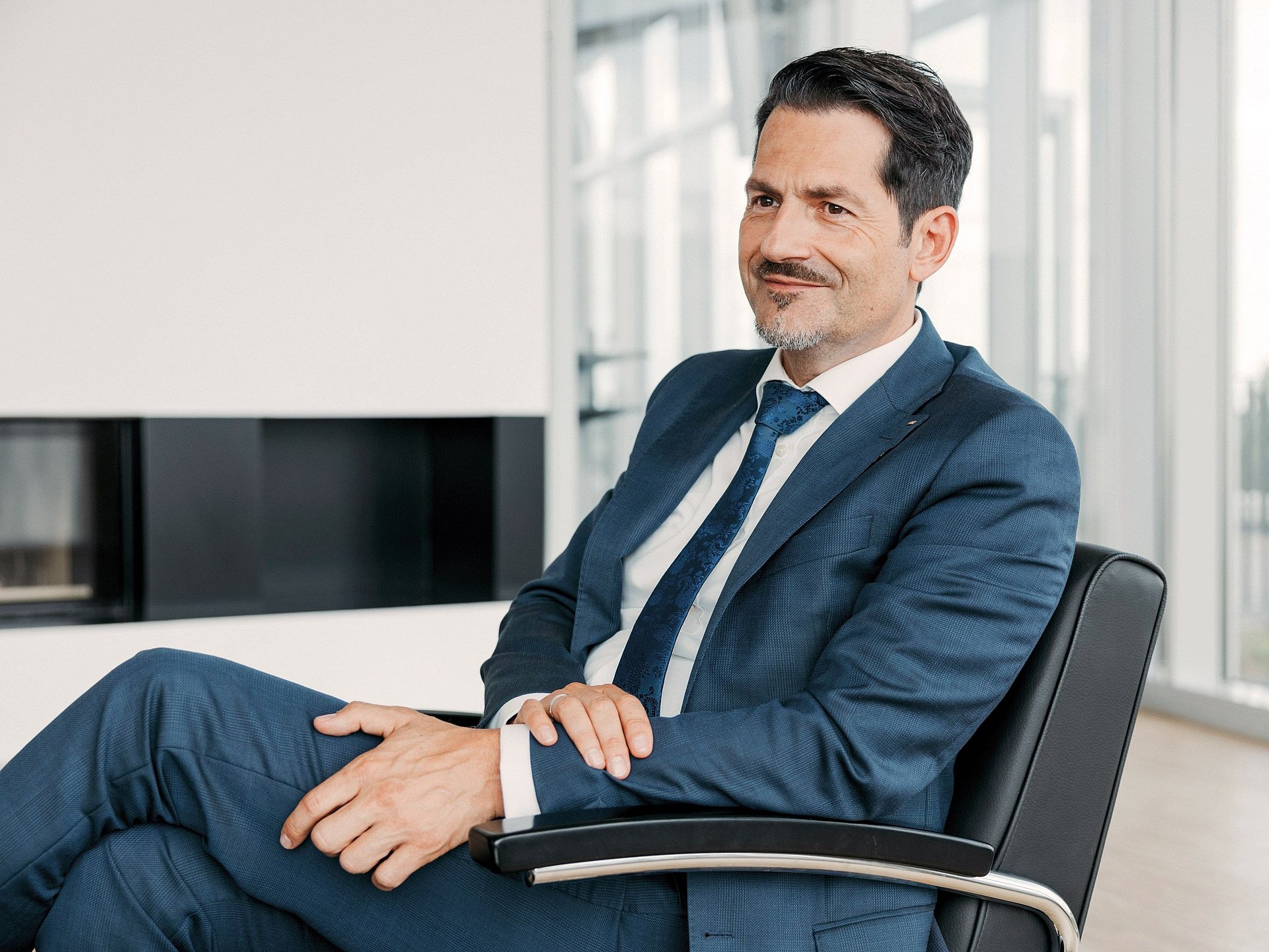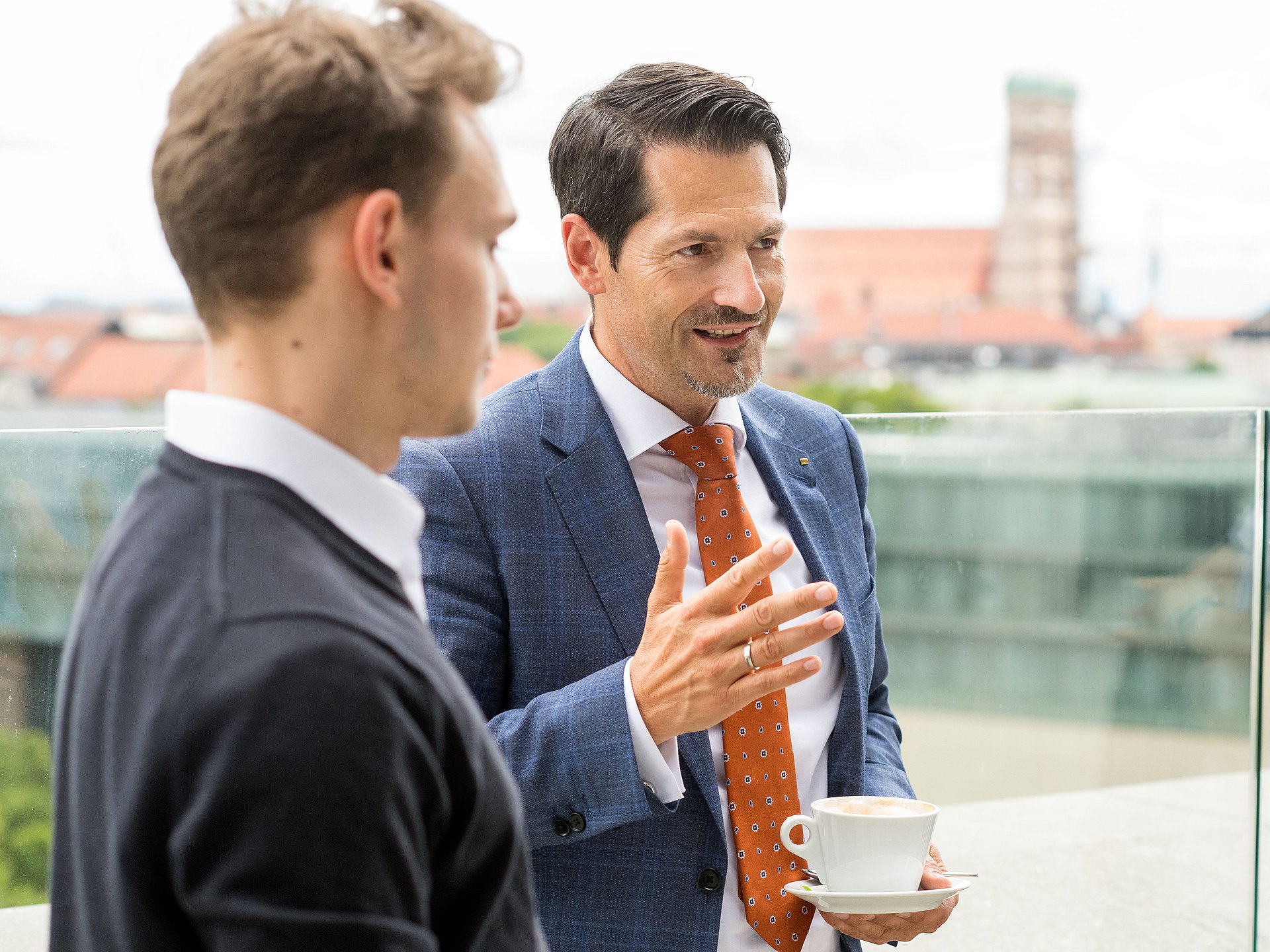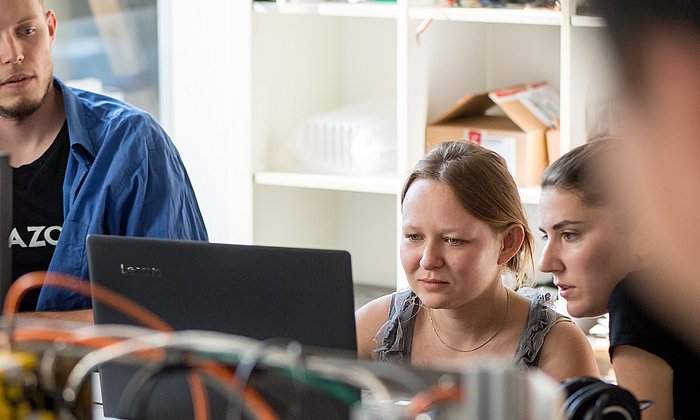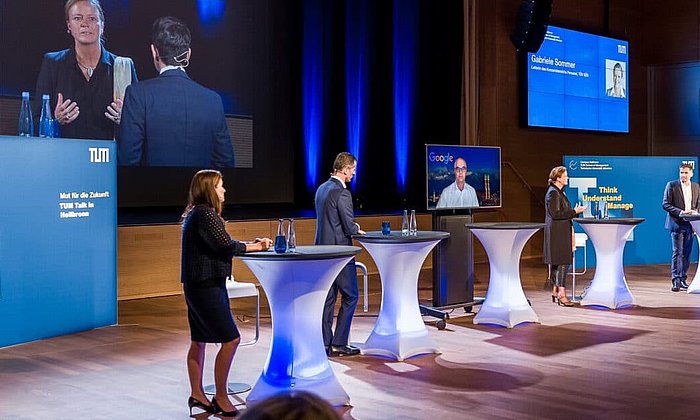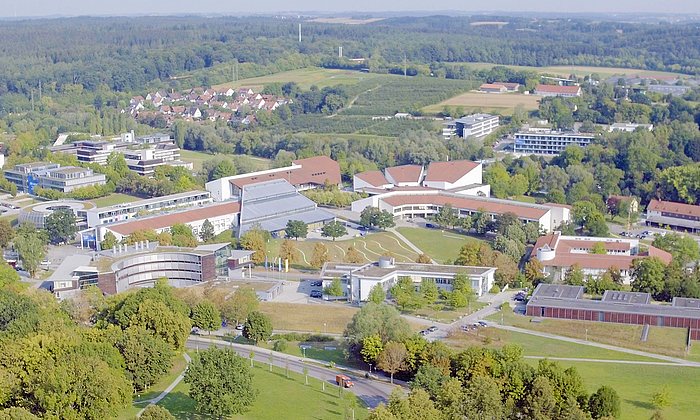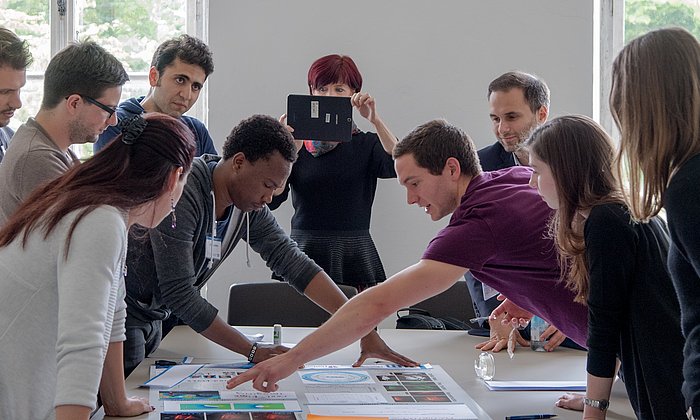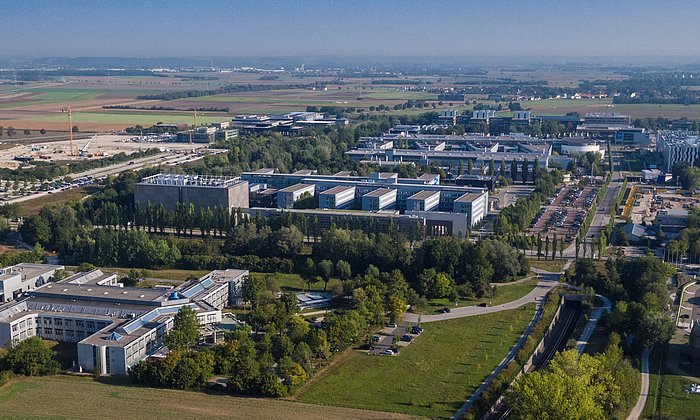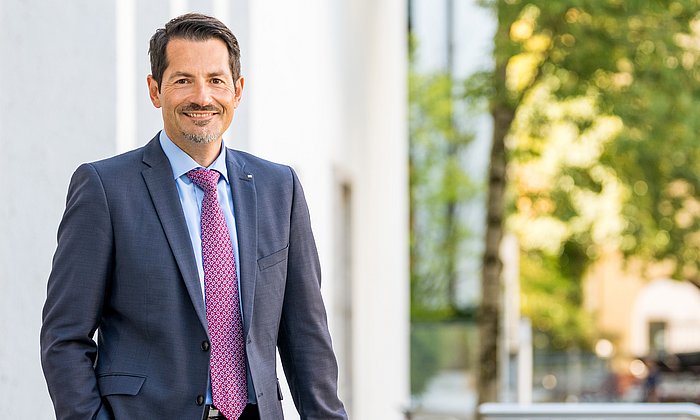A conversation with Prof. Thomas F. Hofmann
“Together on the Pulse of the Future”
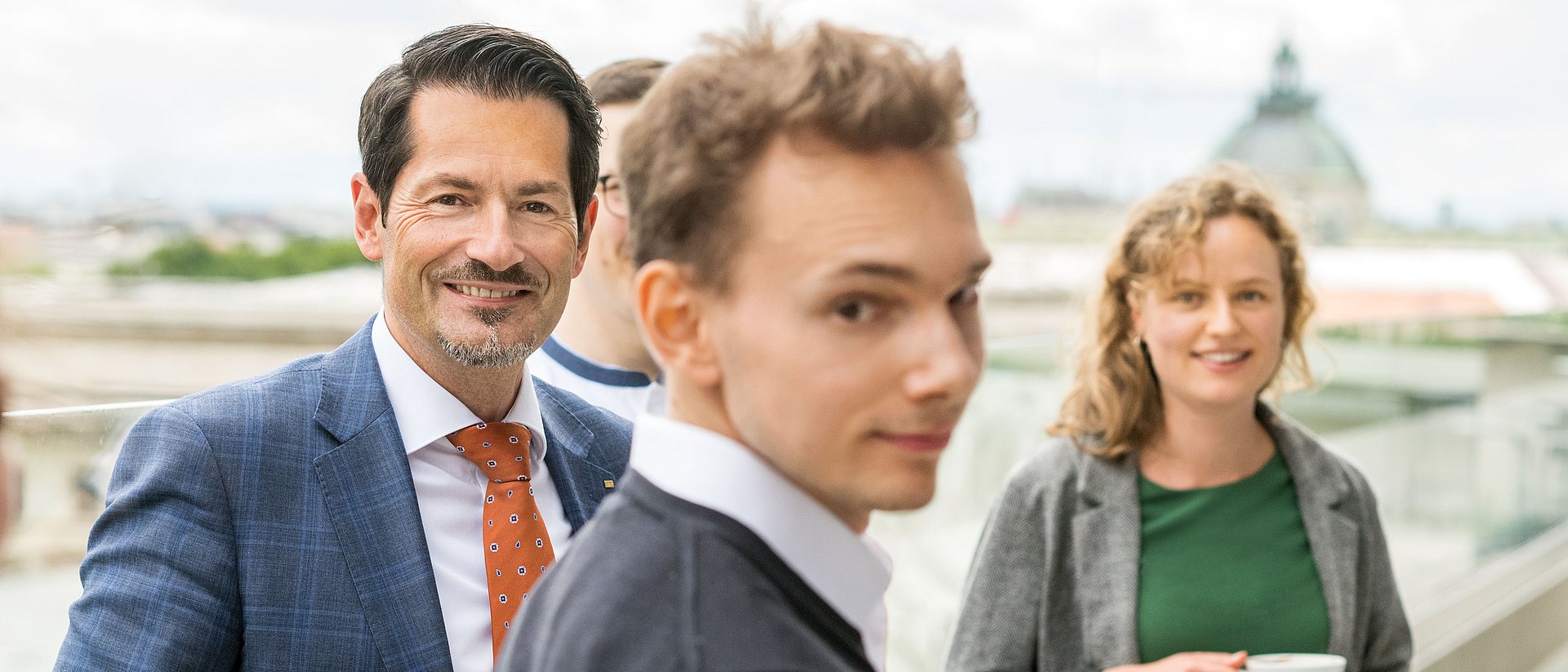
Prof. Hofmann, a year ago you took over as president. What was that like for you?
I have fond memories of the inauguration ceremony, where I took over the helm of TUM from Prof. Wolfgang A. Herrmann. Eager students, dedicated members of the university, active supporters and patrons of TUM, and a number of prominent figures from the worlds of science, business, politics and society gathered to wish me all the best in guiding “our TUM” toward a prosperous future. It was reassuring to know that I had the support of so many in this ambitious endeavor.
How would you describe your first year as president?
Exciting, intense and full of surprises, like the Corona pandemic, for example. This first year was also marked by intensive exchange with the members of our TUM family. They are the DNA of our university. As President, it is important for me to listen to them and show them my appreciation, to learn what moves them, what drives and where they want to go. This helps me to broaden my own horizon. It also enables me to support the members of our university community in taking off their blinders, acting creatively and pursuing promising avenues of development.
„Progress is the result of the open exchange of ideas, knowledge, working methods and experience, across professional and institutional boundaries.”
The central idea of your inaugural speech was your vision of the university as a “global marketplace of knowledge.” How has this vision developed over the past year?
I am convinced that progress is the result of the open exchange of ideas, knowledge, working methods and experience, across professional and institutional boundaries. This is why we want to develop TUM into a place where people from the worlds of science, business, politics and society can engage in intensive exchange with our students, our early-career and seasoned scientists, as well as our alumnae and alumni. I see TUM as a place that brings together people with their individual talents and inspires them, people who support each other and share a commitment to developing innovative solutions to the problems of our time, such as the consequences of climate change. “Together on the pulse of the future” is how I would describe the guiding principle of our new initiative “TUM. The Open University.” As lifelong learners, our university alumnae and alumni can return to their alma mater again and again to refresh and expand their competency profiles, to further their professional development and remain competitive in the face of ever-changing job markets.
Could you give us an example of a specific concept that makes this kind of knowledge exchange possible?
We have bundled our internal development programs for our employees with all of our continuing education offerings under the umbrella of the new TUM Institute for LifeLong Learning (TUM IL3) and have begun to combine competencies from science, technology, business, society and politics in a unique way. Another example might be the TUM THINK TANK, established in March of this year. Our aim here is to provide new impetus in the post-Corona era in the areas of prospective research, effective networking, modern policy advice and future-oriented governance for a resilient economy and society.
You mentioned climate change. Where does TUM stand in terms of sustainability?
Sustainability is part of our guiding principles. We perform leading research and teaching in modern agricultural and plant sciences at the Weihenstephan Campus, bioeconomy and biotechnologies at the Straubing Campus, energy, mobility and climate research at the Garching Campus. At the Munich campus, we research innovative solutions for the sustainable development of our planet. Last year, we initiated the “TUM Sustainability Award” to honor exemplary scientific talents whose environmentally friendly and economically promising technological innovations contribute to ecological transformations.
How sustainable is TUM's organization itself?
It is essential that we integrate sustainability ever more intensely into our own organizational and campus development. To this end, we have established the TUM Sustainability Office, which anchors the topic of sustainability for the first time at the central university level. For example, we want to reflect self-critically on our status quo in terms of greenhouse gas emissions and total energy consumption. We want to identify areas where action is needed and use concrete projects and measures to make the development of our university more sustainable.
You have taken on the task of implementing the strategy that, in 2019, made TUM a university of excellence for the third time. What has been the most important milestone so far?
A core element of the TUM Agenda 2030 is certainly the reorganization of the traditional department structure into a school structure that will drive innovation. In doing so, we are establishing a system that will make it easier for us to bring together researchers and teachers across disciplinary boundaries in dynamic cooperative alliances. The schools describe the major scientific domains and structure the overall portfolio through departments, which serve identity formation and calibration within their respective international scientific communities. At the interfaces between schools, Integrative Research Centers address systematic challenges and far-reaching future questions through transdisciplinary research and teaching. In one school, for example, we are expanding technology-oriented humanities and social sciences, as well as the educational sciences. We thus enable these research domains to develop their own profiles in their respective disciplines, while providing sufficient interfaces to the natural sciences, engineering, life sciences, economics and medical science. They are thus integrated into the overall strategic context of TUM – in keeping with our guiding principle of “Human-Centered Engineering”. This integrative approach takes up the great challenges of our time in sound disciplinary terms, yet it is flexible enough to take into account economic, ecological, design functional, social and political implications. Our first school was fully operational at the start of October: The new TUM SCHOOL OF LIFE SCIENCES.
How will things proceed with the other schools?
We are currently preparing the next schools together with the faculty members. In October, the TUM SCHOOL OF ENGINEERING AND DESIGN entered the founding phase in order to merge the Departments of Mechanical Engineering, Aerospace and Geodesy, Civil, Geo and Environmental Engineering and Architecture, as well as Power Engineering, Electrical and Computer Engineering. In one year's time, the new school will be fully operational and will replace the former departments. The TUM SCHOOL OF COMPUTATION, INFORMATION AND TECHNOLOGY is also in preparation. It will enter the founding phase next year. It is a particular concern of mine to exchange ideas with the deans and to bring together the different personnel groups of the university at round tables, so that they are involved in the reorganization process. We can only successfully implement this transformation together. So far, I have experienced all those involved as very committed and goal oriented. From where we stand today, our goal is to have successfully completed the transition process within three years.
„A core element of the TUM Agenda 2030 is certainly the reorganization of the traditional department structure into a school structure that will drive innovation.”
The new TUM Innovation Networks also conduct research beyond disciplinary boundaries …
… Yes, that’s how we specifically promote the pioneering spirit and collective creativity of transdisciplinary scientific teams embracing new research approaches in important areas of innovation. With the TUM Innovation Networks, we use the opportunity to test new scientific interactivities between schools. They enable us to take up risky yet promising research that is still in its infancy today, to develop it until it reaches a critical mass and thus lay the foundation for new collaborative projects, such as clusters of excellence or collaborative research centers. Researchers were able to apply with project proposals until September. We are currently in the process of selecting the best ones. The first two TUM Innovation Networks, each funded for four years, will commence their research activities in January 2021.
Beyond that, what other milestones have we reached to date?
Our ONE MUNICH strategy is a strategy-building process designed to consistently tap the potential for interaction in emerging areas of research between Munich’s scientific institutions. This will take cooperation to a new level. In the future, competitive performance will no longer take place among individual universities, but between locations and regional innovation ecosystems. In competition with the Ludwig-Maximilians-Universität in Munich, we have spurred each other on to top performance over the years. That has been and remains our incentive, but our joint strategy now means making more efficient use of the opportunities for cooperation. The state ministry supports the ONE MUNICH strategy with up to two million euros a year. The aim is to establish key areas of innovation across institutions that have the potential to develop into new clusters of excellence.
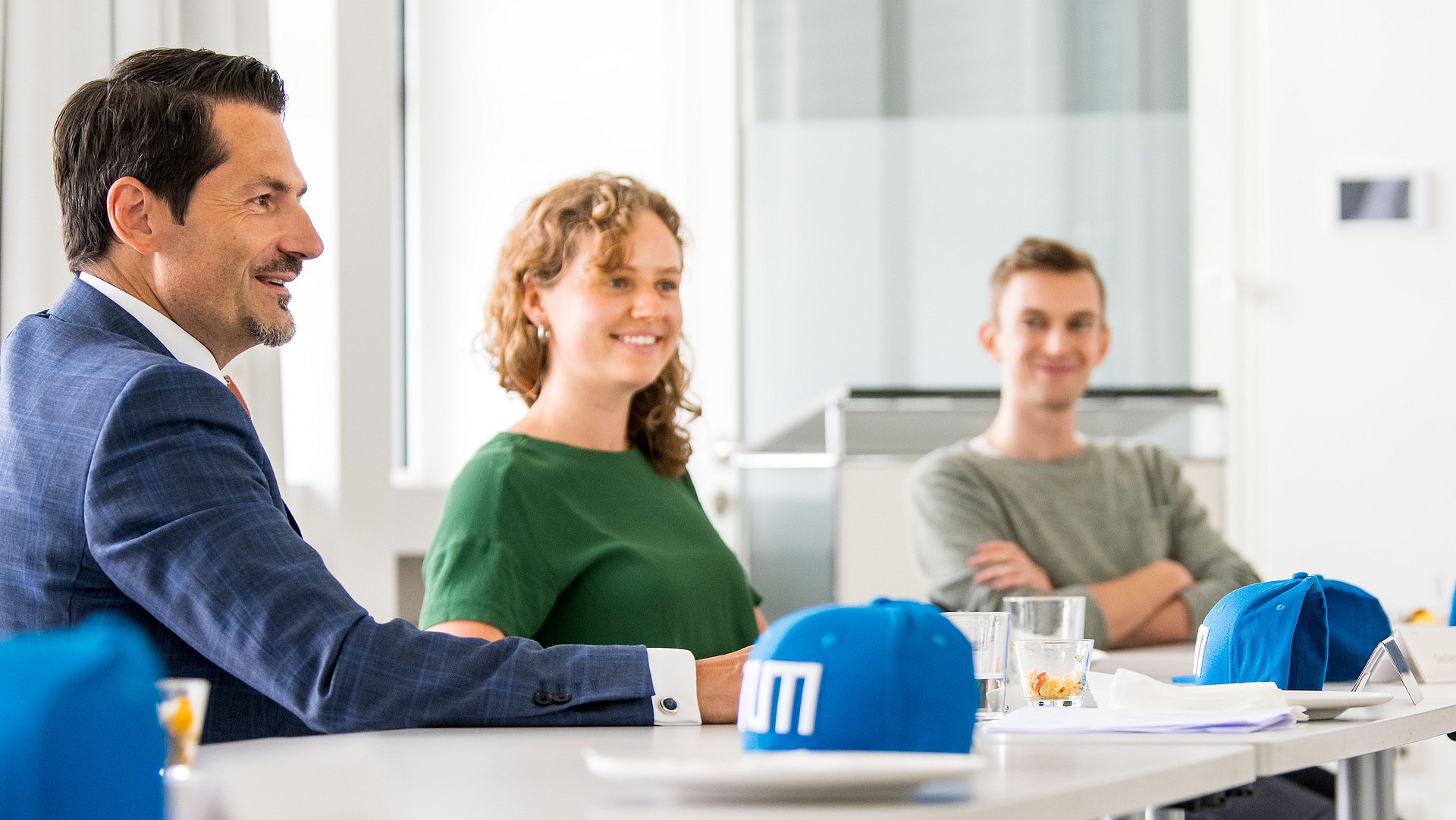
Where do international partnerships come in?
Take our flagship partnership with Imperial College London, for example: In the new Joint Academy of Doctoral Studies, we are currently launching six joint research projects in the thematic cluster Healthcare – AI – Robotics. We are thus combining the strengths of Imperial and TUM to create an international impact that extends far beyond the reach of any individual university alone.
Before you were President of TUM, you served as Vice President for Research and Innovation for ten years. During your tenure in this position, TUM evolved into the most start-up-friendly university in Germany. How can we actually improve on that?
Each year between 70 and 80 start-ups are founded at TUM. I believe we have the potential to increase this number by a factor of ten. In the supportive environment of the Munich Metropolitan Region, this means that we can develop into the leading springboard for start-ups in Europe. Together with our affiliated institute UnternehmerTUM, our center for start-ups and innovation, we will no longer concentrate solely on supporting individual technology-based start-ups. We are creating a network of TUM Venture Labs, each of which will focus on a particular thematic field of innovation. For example, health research, quantum research, software engineering, artificial intelligence, robotics, or food and agricultural research. The TUM Venture Labs are intended to produce entire families of deep-tech start-ups that will enrich one another, inspire young entrepreneurs and open up effective access to international markets, for example, through our networks with global companies within the TUM Partners of Excellence and the “Industry on Campus” partnerships. The TUM Venture Labs provide start-ups with the necessary environment for development, from technical and social infrastructure to entrepreneurship training and support through to corporate and investor networks.
What other goals have you set for the Industry on Campus partnerships?
The classic idea of technology transfer is that universities produce research results that companies then utilize. This is long outdated. To be successful in the new decade requires a shared culture of innovation and a living symbiosis of universities, business and society. This necessitates long-term, strategic and trusting cooperation between higher education and industry. This is the common goal of our “Industry on Campus” strategy. To this end, we have already entered several such long-term partnerships: The DRÄXLMAIER Group, GE Additive and SAP SE are already located on the Garching Campus. Siemens and Oerlikon will follow shortly. We benefit from the ongoing interaction with the complex challenges and questions of the economy and society. Through cooperation with external partners in practice, we are developing our research and teaching to be future oriented. Our students learn to understand new practical contexts, can apply and deepen their knowledge in a valuable way, while companies benefit from the young talents and their creativity, thereby strengthening themselves for international competition. This also forms part of my philosophy of “LifeLong Learning.”
„To be successful in the new decade requires a shared culture of innovation and a living symbiosis of universities, business and society.”
What makes SAP SE particularly interesting as a partner for TUM?
The latest partnership with SAP is solidified by the new building on the Garching campus. A total of 700 employees from SAP and TUM will research on forward-looking technologies under a single roof: AI, cloud computing, robotics, the Internet of Things. With the new building for electrical and computer engineering, the new TUM Center for Quantum Technology, the Munich Data Science Institute and the Fraunhofer Institute for Applied and Integrated Security, we are creating a leading innovative force for digital transformation in Garching.
From the very beginning it has been important to you to have intensive personal exchange with students ...
… because TUM would be nothing without its inquisitive and open-minded students. They define the pulse of the university and shape our future. That's why I think it's important for teachers and students to exchange ideas and communicate with each other. A living culture of appreciation and the open exchange of opinions and ideas with the younger generation is extremely important. We have created new formats to facilitate the uncomplicated and direct exchange with students, such as the TUM Presidential Student Lunch. I had my first such lunch with students from the Departments of Architecture, Civil, Geo and Environmental Engineering, and Electrical Engineering in July. What an enriching experience! After just a few minutes, a very open discussion developed. I was impressed by the clarity of the students’ thoughts and their innovative ideas. They have shown me that we need to make greater use of the energy of the younger generation to make teaching at TUM fit for the future. I already look forward to the next lunch with students from other departments.
„The ability to react rapidly to unforeseen events – that is what makes a truly excellent university in my opinion.”
Can students who don’t have the opportunity to attend a presidential lunch still contribute their ideas?
Absolutely! In addition to the TUM Presidential Student Lunch, we launched the TUM Future Learning Initiative in spring. Here, we created a digital platform where all students were given the opportunity to contribute their ideas for future teaching reform – be it new and networked teaching content, unconventional teaching methods or digital teaching projects. The best of the numerous submissions were selected, and these students were then able to flesh out their ideas together with our experts for teaching and university didactics and pitch them to the entire university in the form of videos. The winning concepts are now being implemented as pilot projects and, if successful, will become an integral part of the teaching reform at TUM.
How do things stand with regard to gender equality at TUM?
TUM has done a great deal in recent years to promote gender equality, particularly through the introduction of the Tenure Track System. From the outset, we offer early-career scientists appointed in this way the realistic prospect of being promoted to a permanent W3 professorship. Almost 40 percent of the 140 tenure-track professorships at TUM are held by women, compared to only 20 percent of earlier professorships. Considering the salaries of the last eight years, you can see that there is no gender pay gap for tenure track professorships at TUM.
From your perspective, what are the greatest challenges in preparing TUM for the future?
Overcoming mental inertia – and the lack of available time it takes to develop something new. We were able to do this under the pressure of the Covid 19 pandemic, which demanded flexibility and rapid response from all of us. Thanks to the enormous dedication and inventiveness of all our faculty, staff, our university didactics experts and student assistants as eScouts, we made the transition to digital teaching university-wide in just three weeks. We developed new creative formats and made TUM a pioneer in electronic examinations in Germany. I would like to take this opportunity to express my gratitude once again to everyone involved for their steadfast commitment and tremendous flexibility! We have also broken down barriers in research: With over 275 research projects related to Covid-19, new interdisciplinary bridges were built in a very short time. Researchers hitherto unknown to one another have started working together to find solutions. For example, scientists from the fields of infection research and financial mathematics have come together to predict the bed utilization at Bavarian hospitals. The ability to react rapidly to unforeseen events – that is what makes a truly excellent university in my opinion. Only those who can overcome the inertia of thought and create new resources of time can respond swiftly and with sufficient agility to the demands of a rapidly changing world.
„Only the interpersonal exchange of knowledge, ideas, experiences and values of the diverse people in our TUM family and its partner network can make ‘Universitas’ a tangible experience.”
Do you think the pandemic has affected the status of higher education and science?
Yes, I do. The crisis has turned the gaze of many toward science. It has also renewed our appreciation of good education. After all, no political decisions are made without the assessments of relevant specialists. Insofar, the crisis represents an historical opportunity for the position of higher education and science. It is to be ardently hoped that the memory of this crisis will have a positive and lasting effect on the perception of science and its search for truth and evidence-based knowledge beyond individual interests in society and politics. Ideally, I imagine the crisis could create a positive impetus for dealing with other global challenges, chief among them climate change.
What is your greatest wish for your second year as president?
More than anything, I would like to see a return to classroom teaching on TUM campuses, despite the ongoing pandemic. As President, it continues to feel strange for me every morning to see so few of our 44,000 students on campus. Of course, we have all meanwhile experienced the advantages of digital teaching formats and these will continue to be an integral element of our hybrid teaching. However, the university as a value-conscious institution devoted to the education of subsequent generations of students cannot tap its true strength from digital networking alone. Only the interpersonal exchange of knowledge, ideas, experiences and values of the diverse people in our TUM family and its partner network can make “Universitas” a tangible experience.
- Our Mission Statement
- Prof. Thomas F. Hofmann studied food chemistry at the Friedrich-Alexander-University Erlangen-Nuremberg. He received his doctorate (1995) and his postdoctoral qualification (1998) at the TUM Department of Chemistry. In 2002, he was appointed as professor at the University of Münster and returned to the newly established Chair of Food Chemistry and Molecular Sensor Technology at TUM in 2007. In 2017, he was appointed director of the Leibniz Institute of Food Systems Biology. Before his election as President of TUM, he was Executive Vice President for Research and Innovation for ten years and played a major role in shaping the 2012 and 2019 excellence strategies.
Technical University of Munich
Corporate Communications Center
- Lisa Pietrzyk
- lisa.pietrzyk@tum.de
- presse@tum.de
- Teamwebsite
